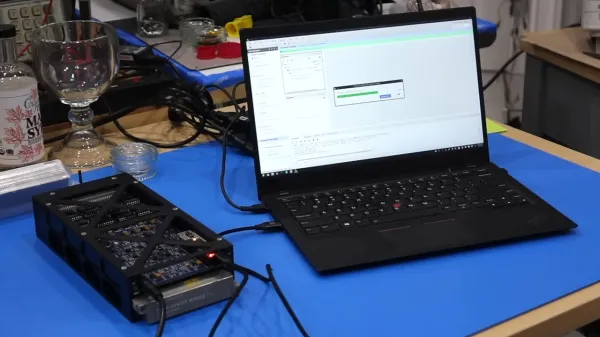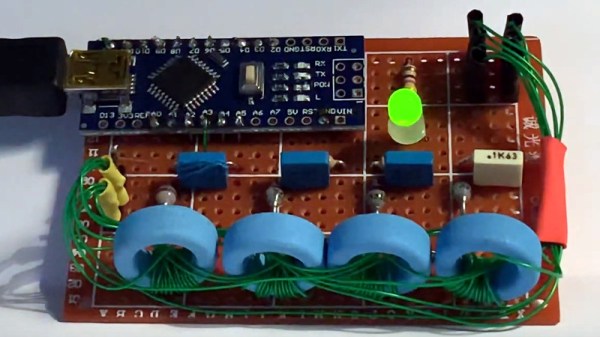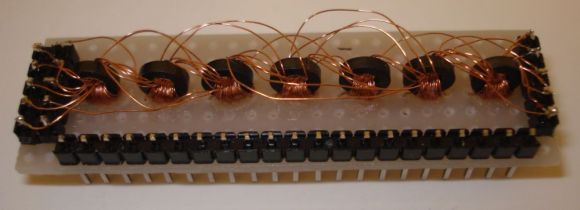If you want read-only memory today, you might be tempted to use flash memory or, if you want old-school, maybe an EPROM. But there was a time when that wasn’t feasible. [Igor Brichkov] shows us how to make a core rope memory using a set of ferrite cores and wire. This was famously used in early UNIVAC computers and the Apollo guidance computer. You can see how it works in the video below.
While rope memory superficially resembles core memory, the principle of operation is different. In core memory, the core’s magnetization is what determines any given bit. For rope memory, the cores are more like a sensing element. A set wire tries to flip the polarity of all cores. An inhibit signal stops that from happening except on the cores you want to read. Finally, a sense wire weaves through the cores and detects a blip when a core changes polarity. The second video, below, is an old MIT video that explains how it works (about 20 minutes in).
Why not just use core memory? Density. These memories could store much more data than a core memory system in the same volume. Of course, you could write to core memory, too, but that’s not always a requirement.
We’ve seen a resurgence of core rope projects lately. Regular old core is fun, too.



















